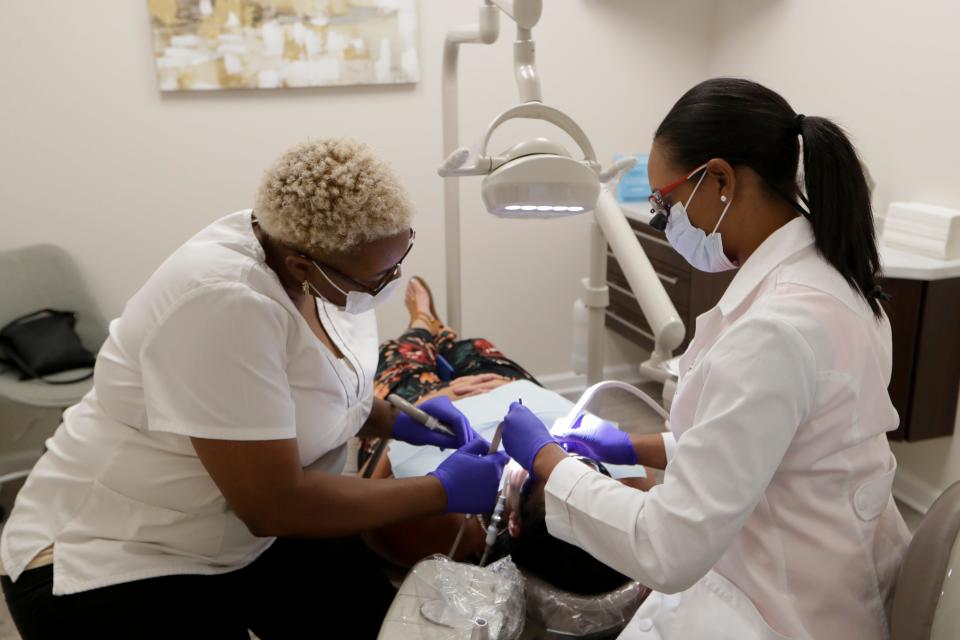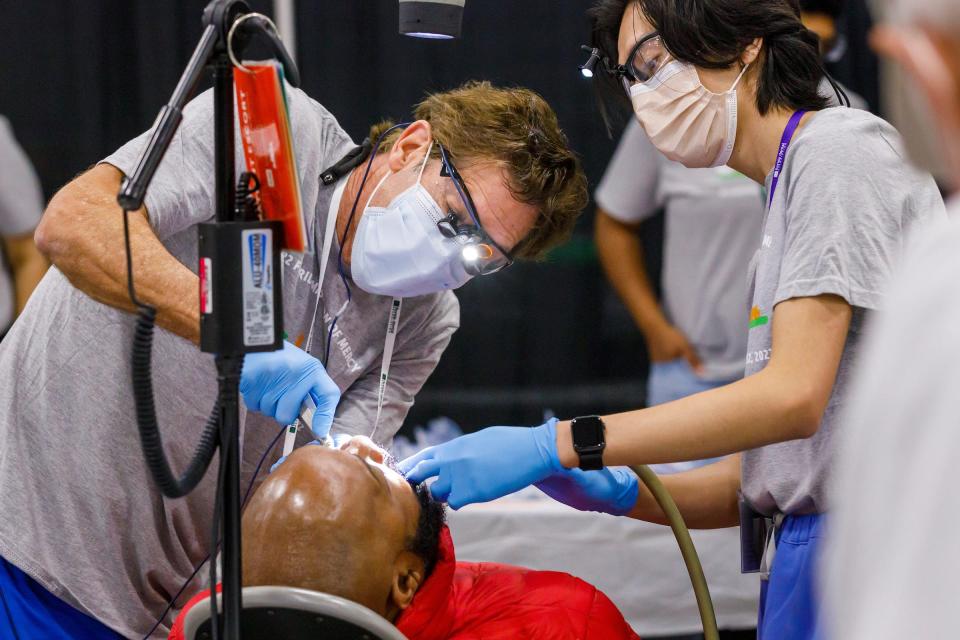How to fight cavities, maintain good oral health over a lifetime
I recently wrote about the importance of good eye health with particular relevance to children. Early diagnosis and treatment can give a child an improved chance in growing through their formative years. The same goes for adolescence and adulthood.
Today’s column provides an overview of relevant oral health issues for children, adults and seniors. Links to more detailed educational and proactive resource information for each group is provided at the end of the column.

Children’s oral health
Cavities (also known as caries or tooth decay) are the most common chronic disease of childhood in the United States. Untreated cavities can cause pain and infections that may lead to problems with eating, speaking, playing, and learning. Children who have poor oral health often miss more school and receive lower grades than children who don’t.
More than half of children aged 6 to 8 have had a cavity in at least one of their baby (primary) teeth.
More than half of adolescents aged 12 to 19 have had a cavity in at least one of their permanent teeth.
Children aged 5 to 19 years from low-income families are twice as likely (25%) to have cavities, compared with children from higher-income households (11%).
The good news is that cavities are preventable. Fluoride varnish can prevent about one-third (33%) of cavities in the primary (baby) teeth. Children living in communities with fluoridated tap water have fewer cavities than children whose water is not fluoridated. Similarly, children who brush daily with fluoride toothpaste will have fewer cavities.
Dental sealants can also prevent cavities for many years. Applying dental sealants to the chewing surfaces of the back teeth prevent 80% of cavities.
Adult oral health
The major risks for tooth loss are cavities and gum disease that may increase with age because of problems with saliva production; receding gums that expose “softer” root surfaces to decay-causing bacteria; or difficulties flossing and brushing because of poor vision, cognitive problems, chronic disease, and physical limitations.
Although more adults are keeping their teeth, many continue to need treatment for dental problems. This need is even greater for members of some racial and ethnic groups — about 3 in 4 Hispanics and non-Hispanic African-American adults have an unmet need for dental treatment, as do people with lower incomes. These individuals are also more likely to report having poor oral health.
In addition, some adults may have difficulty accessing dental treatment. For every adult aged 19 years or older without medical insurance, there are three who don’t have dental insurance.
Oral health problems in adults include the following:
Untreated cavities. More than 1 in 4 (26%) adults in the United States have untreated tooth decay.
Gum disease. Nearly half (46%) of all adults aged 30 years or older show signs of gum disease; severe gum disease affects about 9% of adults.
Tooth loss. If left untreated, cavities and periodontal (gum) disease lead to tooth loss. Severe tooth loss—having 8 or fewer teeth—impacts the ability to eat meats, fruits, and vegetables, and presents yet another challenge to having a healthy diet
Oral cancer. Oral cancers are most common in older adults, particularly in people older than 55 years who smoke and are heavy drinkers.
Chronic diseases. Having a chronic disease, such as arthritis, heart disease or stroke, diabetes, emphysema, hepatitis C, a liver condition, or being obese may increase an individual’s risk of having missing teeth and poor oral health.

Older adult oral health
Oral health problems in older adults include the following:
Untreated tooth decay. Nearly all adults (96%) aged 65 years or older have had a cavity; 1 in 5 have untreated tooth decay.
Gum disease. A high percentage of older adults have gum disease. About 2 in 3 (68%) adults aged 65 years or older have gum disease.
Tooth loss. Nearly 1 in 5 of adults aged 65 or older have lost all of their teeth. Complete tooth loss is twice as prevalent among adults aged 75 and older (26%) compared with adults aged 65-74 (13%).3 Having missing teeth or wearing dentures can affect nutrition, because people without teeth or with dentures often prefer soft, easily chewed foods instead of foods such as fresh fruits and vegetables.
Oral cancer. Cancers of the mouth (oral and pharyngeal cancers) are primarily diagnosed in older adults; median age at diagnosis is 62 years.
Chronic disease. People with chronic diseases such as arthritis, diabetes, heart diseases, and chronic obstructive pulmonary disease (COPD) may be more likely to develop gum (periodontal) disease, but they are less likely to get dental care than adults without these chronic conditions.6 Also, most older Americans take both prescription and over-the-counter drugs; many of these medications can cause dry mouth. Reduced saliva flow increases the risk of cavities.
The importance of taking care of our oral health through all stages of life is an important addition to a better quality of life through following a healthier lifestyle.
Thanks to the Centers for Disease Control and Prevention (CDC) for much of the content provided here.
Additional Resources
Children: Oral health resources for infancy through teenage years can be accessed through the American Academy of Pediatrics (AAP) at mychildrensteeth.org.
Adults: A good resource, “What Can Adults Do to Maintain Good Oral Health?” is available through the CDC atcdc.gov/oralhealth.
Older Adults: The National Institute on Aging (NIA) has a good resource, “Taking Care of Your Teeth and Mouth at nia.nih.gov.
Mark Mahoney has been a Registered Dietitian/Nutritionist for over 35 years and completed graduate studies in Public Health at Columbia University. He can be reached at marqos69@hotmail.com
This article originally appeared on Tallahassee Democrat: Tips for maintaining healthy teeth and gums over a lifetime

